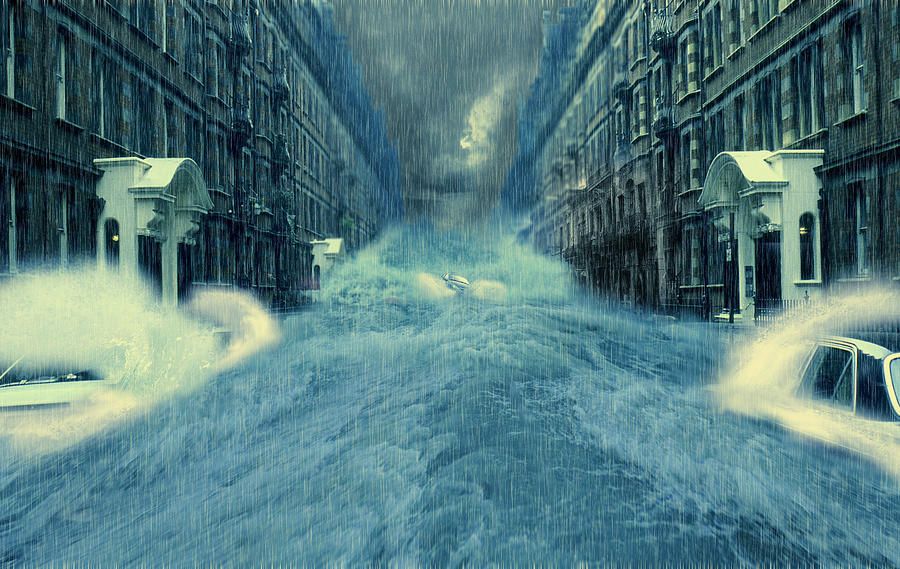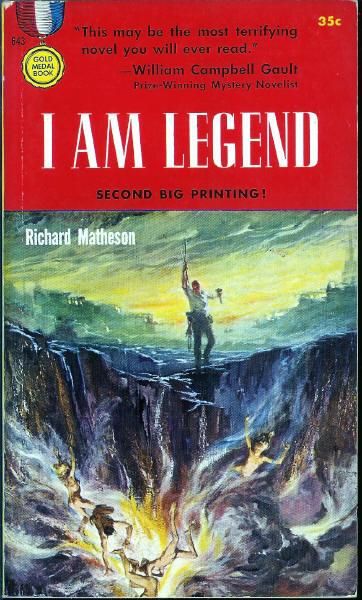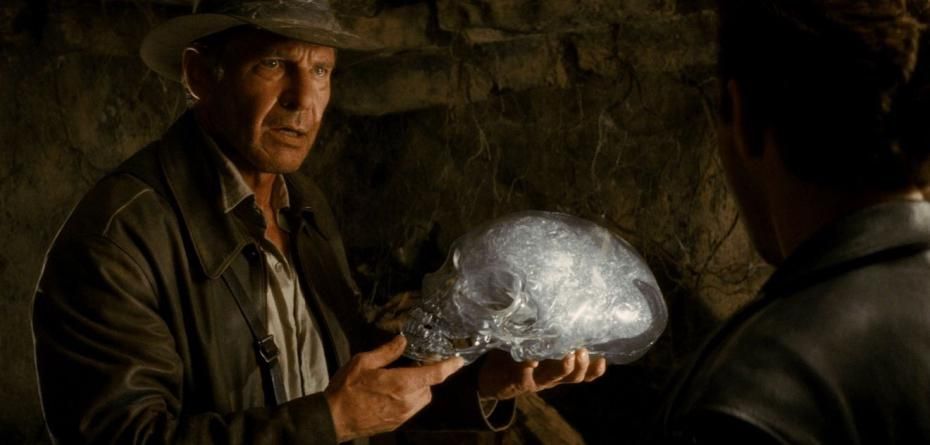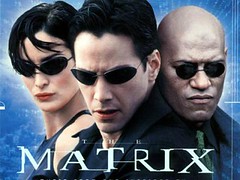
Movies have an incredible power to transport us to fantastical worlds, offering a thrill ride whether we’re soaring with superheroes, exploring distant galaxies in science fiction epics, or witnessing action-packed adventures. These cinematic experiences often push the boundaries of imagination, sometimes even bending the rules of science to craft a more compelling narrative – and frankly, that’s perfectly fine for the sake of entertainment! We love seeing the impossible become possible on screen, allowing our imaginations to run wild without the constraints of reality.
However, there’s a point where bending those rules can stretch the fabric of scientific credibility a little too thin, leading to outright inaccuracies that even a casual observer can’t help but notice. From asteroid-splitting heroics to instant ice ages and questionable biological experiments, some of our most beloved and iconic films, despite their entertainment value, are packed with moments that make scientists (and even a few keen-eyed fans) scratch their heads. It’s a fascinating dichotomy: the brilliant storytelling clashing with the undeniable facts of our universe.
So, for all you movie buffs and science enthusiasts out there who are curious about what *really* should have happened, we’re embarking on an in-depth journey. We’ll break down the myths versus the science behind some of the most memorable scenes and plot points from these blockbuster hits. Prepare to have your perceptions challenged and your understanding of cinematic science refined as we delve into the egregious scientific missteps that made these films not just entertaining, but also surprisingly inaccurate. Let’s get started!

1. **Jurassic Park**Steven Spielberg’s classic sci-fi adventure, *Jurassic Park*, roared into theaters in 1993, captivating audiences and revolutionizing how the public imagined dinosaurs. This entertaining franchise, focusing on genetic scientists working with de-extinct creatures, fundamentally lands itself in the “bad science in movies” category due to its main plot point and numerous biological inaccuracies. The film prioritized spectacle over scientific accuracy, creating dinosaur portrayals that were more monstrous and dramatically compelling than their real-life counterparts, thereby perpetuating several eye-opening scientific myths.
The core scientific blunder is the recreation of dinosaurs from preserved DNA. Real-life scientists would need a whole genome to replicate, but “scientists don’t have even a small amount of dinosaur DNA,” according to the BBC. The context highlights that “liquid blood seldom exists in fossilised creatures, let alone mosquitoes who suck on others’ 65 million years ago,” making amber-coated mosquitoes with viable dinosaur blood “a bit too far-fetched to be real.” Furthermore, DNA has an “expiration date,” meaning “it cannot be used after 65 million years for the purposes laid out in the film!” Even mixing dino-DNA with frog DNA “would create a new species altogether or more likely nothing at all,” rather than original dinosaurs.
Beyond cloning, the film takes significant liberties with dinosaur characteristics and classification. “Although the movie title uses Jurassic, all the dinosaurs in the film are actually from the Cretaceous period.” The famed “Velociraptors” were depicted as “man-sized, highly intelligent pack hunters,” but actual Velociraptors were roughly the size of turkeys, standing “about 1.6 feet (0.5 meters) tall” and weighing “about 33 pounds (15 kg).” These film raptors were more akin to Deinonychus or Utahraptor. Critically, a “major scientific oversight” was the “complete absence of feathers on its dinosaurs.” By the time later sequels were made, fossil evidence confirmed many theropod dinosaurs, including Velociraptors, “were covered in feathers or feather-like structures,” a key evolutionary link to modern birds.
Read more about: Beyond the Limelight: How 14 Celebrity Moguls Master Private Equity and Hedge Funds

2. **The Day After Tomorrow**The frightening image of a frozen New York City in *The Day After Tomorrow* (2004) captivated audiences with its dramatic depiction of a rapid climate catastrophe. This movie posits that global warming instantly leads to a new ice age following catastrophic weather events. While visually spectacular and undeniably entertaining, the film is widely recognized for its “many inaccuracies, oversimplifications and dramatic embellishments,” making its scientific foundation exceptionally weak and far removed from actual climate science.
One of the central scientific flaws revolves around the speed of temperature change and ocean currents. The movie suggests an instant shutdown of the ocean current, leading to rapid glaciation. However, while “current circulation is weak,” according to a 2018 study, it’s “highly unlikely for this change to happen instantly.” The National Center for Atmospheric Research told NBC that “temperatures could drop in parts of the world, but it would take decades for such a big switch,” not the minutes or hours depicted. The film’s “drastic temperature changes… within a matter of minutes and hours is astonishingly unbelievable,” accelerating a process that would typically unfold over millennia.
The movie’s portrayal of rapidly rising sea levels and falling temperatures “within very short time-span” is impossible, particularly without sea levels falling again as the ice age commences. Furthermore, if a tsunami did hit Manhattan and then froze within hours, “why on Earth are the buildings not torn apart as ice expands during the freezing process?” These details underscore how scientific reality was sacrificed for dramatic effect. While *The Day After Tomorrow* excels in CGI and performances, it “fails miserably at the premise” of a plausible, rapid-onset ice age, highlighting a significant divergence between cinematic spectacle and scientific fact.
Read more about: Guard Your Investment: 14 Common Mistakes That Instantly Slash Your Classic Car’s Value by $10,000

3. **Armageddon**Bruce Willis’s heroic mission in *Armageddon* (1998) to save Earth from an asteroid collision has become a prime example of scientific inaccuracy, famously “used by the likes of NASA to telltale on what cannot happen in space.” The blockbuster’s thrilling plot involves training oil drillers to become astronauts in mere weeks to detonate a hydrogen bomb at the asteroid’s center, splitting it into two harmless pieces. The stakes are undeniably high, but the scientific incredulity surrounding this solution is even higher.
Experts agree that the science for this heroic act “doesn’t add up and is one of the many examples of bad science in movies.” Physics students in the U.K. calculated that for the plan to work, “the bomb would need to be a billion times stronger than the biggest bomb ever detonated on Earth.” Even with such an explosive, the physics would likely just create more debris still headed toward Earth, not split it cleanly. The notion that an asteroid “could be damaged and maybe even split in half by just drilling 800 feet into it” is an improbable fantasy, and a “little pea of a comet would not be able to knock an asteroid into our orbit.”
Beyond the explosive solution, the film has other significant flaws, including the asteroid’s detection. An object described as “the size of Texas” would be spotted far earlier than “less than 20 days” before impact, as astrophysicist teams constantly monitor objects within “100 million miles” of Earth. Moreover, the film’s depiction of space includes “banking of spaceships” and “fire without oxygen” after a crash landing—”purely ridiculous as there isn’t any oxygen out there.” NASA reportedly screens the film for new recruits to spot “all 168 heinous mistakes,” firmly cementing its reputation as a scientific laughing stock, despite its high-octane action.
Read more about: The ‘Top’ Takedown: A Deep Dive into Ten Definitions of ‘Top’ That Can Shatter a Brand’s Standing

4. **I Am Legend**Will Smith’s *I Am Legend* delivers a gripping post-apocalyptic vision where a virus has decimated humanity, transforming survivors into aggressive, nocturnal creatures. Smith’s character, Robert Neville, endeavors to develop a vaccine as the last uninfected human in New York City. While the film provides intense suspense and a powerful performance, its core biological premise regarding the virus’s behavior and vaccine development takes substantial liberties with scientific reality, undermining the scientific foundation of its terrifying apocalypse.
A central flaw lies in the virus’s dramatic mutation and transmission methods. The film states that “the virus mutates and becomes airborne,” and then “infected people spread the disease by biting others.” In reality, viruses do not typically undergo such a fundamental shift from airborne to bite-transmitted in such a short time. While a virus can evolve to become more transmissible, a complete change in its primary mode of infection, coupled with radical physiological effects, stretches scientific credibility. This dramatic shortcut serves the plot but deviates significantly from established virology.
Furthermore, Neville’s approach to vaccine creation is scientifically unsound. As an uninfected individual, his belief that his blood can directly create a vaccine is incorrect. Vaccines “train the immune system to recognize pathogens by first introducing traces of the virus to the body.” An uninfected person’s blood would not contain the necessary antibodies or viral components to stimulate an immune response in others. *I Am Legend* effectively crafts a terrifying horror-thriller, but it necessitates a considerable suspension of scientific disbelief regarding its viral mechanics and the process of developing a cure.
Read more about: Remember These? 13 Baby Boomer Names That Are Practically Extinct on Today’s Playgrounds

5. **Indiana Jones and the Kingdom of the Crystal Skull**The *Indiana Jones* franchise is celebrated for its thrilling adventures, but *Indiana Jones and the Kingdom of the Crystal Skull* contains a moment of extreme scientific improbability that became infamous. In a widely ridiculed scene, Indy survives a nuclear explosion by hiding inside a refrigerator. Despite the blast violently throwing the fridge through the air, Indiana miraculously emerges unharmed, completely defying all known laws of physics, nuclear weapon effects, and basic survival.
This scene is a prime example of egregious “bad science in movies” because, quite simply, “you probably can’t survive a nuclear bomb blast by hiding in an old fridge.” The immense destructive power of a nuclear weapon would obliterate the refrigerator and anything inside it. While a lead-lined refrigerator might offer minimal protection from radiation to an extent, it “isn’t blast proof to start with.” The sheer force of a nuclear blast would generate incredible pressures and heat, making Indy’s survival nothing short of a cartoonish miracle.
The absurdity extends beyond the blast itself. Even if the fridge *somehow* survived the initial explosion, “the effect of tumbling end over end down a steep slope would’ve certainly broken a few bones.” The kinetic energy transferred during such an event would be immense. For Indy to walk away unscathed represents a clear instance of “understated damage caused by a nuclear bomb.” This sequence became so notorious that, “for a time, the phrase ‘nuking the fridge’ replaced ‘jumping the shark,'” cementing its place as a quintessential example of a franchise moment that strains credibility into outright absurdity.
Read more about: Hollywood’s Missed Cues: 12 Cinematic Missteps That Should Have Stayed in the Can

6. **Lucy**The movie *Lucy* (2014) plunges viewers into a high-concept thriller where a woman, after a drug enters her system, supposedly gains superhuman abilities by accessing and using the “90% of her brain that most people reportedly never use.” This premise posits that unlocking more brainpower makes her superhuman, granting extraordinary cognitive and physical abilities. However, the entire foundation of the film hinges on a pervasive, yet thoroughly debunked, scientific myth, making its central conceit a significant scientific inaccuracy.
The core scientific blunder is the persistent myth that “humans use only 10% of their brain.” This urban legend “has been invalidated many-a-times by renowned scholars and neuroscientists.” In reality, “people use virtually every part of the brain, and most of the brain is active all the time.” Brain scans and studies consistently show widespread activity across various brain regions, even during rest or simple tasks. There is no vast, dormant reserve of “90% of her brain” waiting to be unlocked; the brain functions as a complex, interconnected organ with all areas engaged for different purposes.
Furthermore, the idea that a powerful synthetic drug could grant access to this non-existent higher brain capacity and consequently bestow superpowers is, as the context states, “outrageous.” While certain substances can alter brain function, none are known to unlock latent cognitive potential to transform an individual into a telekinetic, time-manipulating super-being. The movie’s concept of a drug “exploiting a higher brain capacity” is pure fiction, a fantastical leap rather than a scientific possibility. Despite these glaring flaws, *Lucy* offers a thrilling narrative with fast-paced action and philosophical queries about the mind’s limits, even if its scientific underpinnings are entirely fabricated.
Read more about: Beyond the Hype: 14 Films That Absolutely Blew Our Expectations Out of the Water

7. **The Matrix***The Matrix*, a groundbreaking sci-fi masterpiece, captivated global audiences with its innovative simulated reality and profound philosophical questions. Yet, beneath its sleek aesthetic and thought-provoking narrative lies a scientific premise that, while iconic, doesn’t withstand scrutiny: the idea that humans are used as biological batteries to power machines. This concept is central to the film’s dystopian world, making it one of its most significant, albeit visually compelling, scientific inaccuracies.
The core scientific blunder revolves around the thermodynamics of energy conversion. The film depicts a future where machines enslave humanity, keeping people in vast pods and harnessing their bio-electrical energy. The context unequivocally states, “People don’t need to worry about turning into human batteries to power machines, like in The Matrix.” The simple truth is that even “a human body at rest requires a decent amount of energy” just to sustain its basic functions. Our bodies are complex biological systems that consume far more energy than they could ever produce as an efficient power source.
The energy the machines would supposedly receive from people is “very little compared with how much energy it takes to keep them alive.” To sustain millions of humans in stasis—feeding them, regulating environments, and maintaining life support—the machines would expend enormous amounts of energy. The net energy gain would be negative, defying the laws of energy conservation. Logically, machines would opt for more efficient power sources like solar or geothermal. Despite this central scientific inaccuracy, *The Matrix* remains a landmark film, its “human battery” concept serving as a powerful, symbolic, yet unscientific, metaphor for human exploitation and artificial existence.
Continuing our exposé of cinematic science gone wrong, this section uncovers the factual missteps in seven more iconic films, dissecting errors in space physics, geological disasters, viral outbreaks, alien vulnerabilities, and the very foundation of Earth’s existence.
Read more about: Forever Fun: MotorTrend Ranks the 10 Most Dependable Coupes Built to Last for Years to Come

8. **Gravity**Alfonso Cuarón’s *Gravity* captivated audiences with its breathtaking visuals and intense, claustrophobic narrative of survival in orbit. The film’s masterful cinematography transported viewers into the vast, silent expanse of space. While *Gravity* earned accolades for its immersive experience, many scientists and space enthusiasts were quick to pick apart its numerous liberties with the laws of physics and the harsh realities of orbital mechanics.
One of the primary criticisms centers on the film’s spatial geography. It depicts various space stations and satellites—like the Hubble Space Telescope, the International Space Station, and a Chinese space station—all conveniently located within easy reach of each other. In reality, these objects orbit at vastly different altitudes and inclinations, meaning a simple maneuver from one to another, as Sandra Bullock’s character often does, would be an utterly impossible feat given the fuel and time constraints. To move between them would require a staggering amount of energy and planning, not just a casual point and propel.
Furthermore, the film’s portrayal of physics in a zero-gravity environment often falls short. Experts note that bodies don’t freeze instantly when exposed to space, nor do tears float off your face in neat little spheres without disturbing your vision. The notion that one can simply point at an object and go toward it, as the stars seem to do throughout the movie, oversimplifies the complexities of Newtonian mechanics in orbit. Even the film’s dramatic climax, involving George Clooney’s character detaching himself, has been debated by astronauts, with some suggesting he would have merely floated alongside Sandra Bullock instead of drifting off into space. Despite these inaccuracies, *Gravity* remains a visual masterpiece that immerses viewers in a gripping tale of survival, even if it requires a significant suspension of scientific disbelief regarding its depiction of space.
Read more about: The Essential Guide for Men Over 40: 14 ‘Inefficient’ Exercises to Ditch and Their Safer, Smarter Alternatives

9. **The Core***The Core* takes audiences on an audacious journey to the Earth’s very heart, where a team of scientists aims to restart a failing outer core using nuclear bombs. The premise itself is a geophysicist’s nightmare, defying established understanding of planetary science and the sheer scale of such an undertaking. While the film attempts to inject scientific jargon, it quickly descends into a realm of pure fantasy, offering a thrilling but utterly unrealistic vision of geological disaster and intervention.
The idea that humanity could drill thousands of miles into the Earth’s core and then detonate a nuclear device to kick-start its rotation is baffling at best. Even today, the deepest human drilling projects have barely scratched the Earth’s crust, making the prospect of withstanding the immense pressures and thousand-degree temperatures required to reach the core insurmountable with current—or even foreseeable—technology. Moreover, the basic physics of energy conservation is openly defied, as a nuclear bomb detonation, even a 1000-megaton one, would be akin to using a small rock to create substantial waves in a lake when compared to the vast forces governing the Earth’s core.
Beyond the core mission, *The Core* introduces a plethora of other scientific absurdities. The film suggests that microwaves can cause “severe” damage worldwide, impacting electronics and threatening global survival, when in reality, their reach is far more limited, causing only disturbances in radios and phones. The communication capabilities of the crew, maintaining radio contact for as long as they do while thousands of miles inside the Earth, is also highly improbable. And the notion of characters being able to walk outside their ship in an environment of insane pressures and extreme heat, however briefly, stretches credibility to its breaking point, making *The Core* a prime example of a movie where scientific facts and logic die a peaceful, if dramatic, death.
Read more about: The Lowdown on Livability: Unpacking America’s 10 Unhappiest States for Quality of Life and Well-being

10. **2012**Roland Emmerich’s *2012* presented a cataclysmic vision of global destruction, where the Earth’s crust shifts, tsunamis engulf continents, and volcanoes erupt worldwide. The movie capitalized on popular anxieties about the end of the world, delivering a spectacle of unimaginable destruction. However, the film’s entire premise is built upon pseudo-scientific concepts that are largely dismissed by the mainstream scientific community, making it a spectacular visual experience but a profound scientific misstep.
The film hinges on the controversial crustal displacement theory and the notion that solar neutrinos could suddenly heat the Earth’s core. Scientists unequivocally state that solar flares can cause problems with electronic devices, but they simply do not possess the power to trigger global earthquakes and tsunamis on the scale depicted. The external core of the Earth also does not get heated as much as the inner ones, directly contradicting the film’s dramatic portrayal of the Earth’s surface tearing itself apart due to internal heating.
The instantaneous nature of the global cataclysms in *2012* further strains scientific credibility. While geological events unfold over vast timescales, the movie shows cities collapsing and tsunamis forming within minutes, accelerating natural processes by millions of years for dramatic effect. Even phenomena like planes flying with ease amidst volcanic ash, a highly dangerous and damaging environment for aircraft, are presented without any grounding in reality. Despite its groundbreaking CGI and action sequences, *2012* offers a thrilling, albeit entirely fictional, portrayal of global disaster, playing on fears of cosmic events without any scientific basis.
Read more about: Beyond the Muffler: 12 Expert-Approved Ways to Achieve a Deeper, More Aggressive Exhaust Note
As we conclude our deep dive into the most scientifically inaccurate movies ever, it’s clear that the allure of a gripping narrative often trumps the cold, hard facts of science. From dinosaurs with misplaced feathers to rapid-fire ice ages, asteroid-splitting heroics, and even aliens susceptible to water, Hollywood has consistently bent, stretched, and outright broken the rules of our universe. These films, despite their scientific blunders, continue to entertain, provoke, and inspire, proving that sometimes, a good story is all we truly need to escape reality. While scientists may wince, we, as fans, can appreciate the sheer imagination on display, even if it makes us ponder what *really* should have happened. The silver screen remains a place where the impossible comes to life, reminding us that for all the scientific rigor, there’s always room for a little movie magic.”



